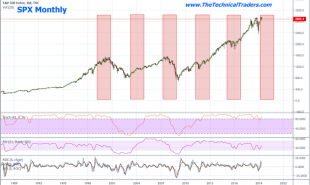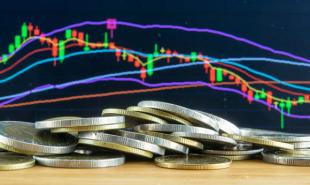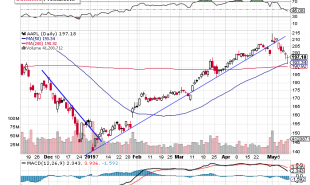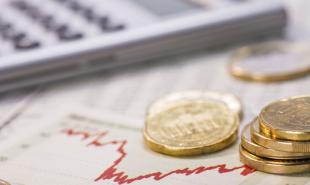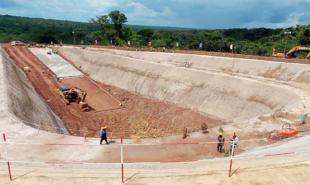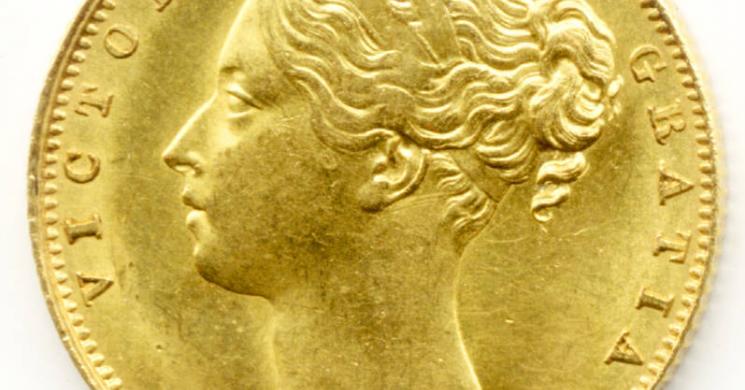
Asset deflation and retail price inflation could be the deadly combination to defeat the central bankers, the asset markets and perhaps even the Western world's standard of living. The Fed is in a bind. Will this ignite gold?
Two Fires Lit Under Gold
The very first green shoots are beginning to show for the goldbugs and hard money advocates with the early 2016 rally in gold prices and precious metal stocks.
Spring is in the air and goldbugs are walking with that same spring in their step for the first time for ages after a long and bitter 5-year winter of losses.
What has caused this? Well, as so often happens, maybe it is just psychology and confidence that has driven a reversal to the upside in gold and related mining investments. It seems that the 1/4 percent interest rate hike in December 2015 by the Fed under Janet Yellen was the turning point, the high water mark in the anti-gold trade that actually failed to seal the fate of the pet rock as it should have done and bury it once and for all.
After that day, stock markets and oil plunged; gold made a U-shaped bottom formation and rallied a spectacular 20%, retail price inflation ticked up in both the USA and UK and negative interest rates have broken out seemingly almost everywhere else in the industrialized world, especially in Europe and Japan.
This has brought forth proposals from policymakers for a trip down the rabbit hole into a cashless society to trap everyone’s money forever inside the banking system so their savings can be eroded by negative rates - and even the proposed abolition of the 500 Euro and $100 cash notes to prevent hoarding of cash in the meantime. Meanwhile in Japan, hoarding of cash is already underway with the total value of the supply of 10,000 Yen cash notes up over 6% last year due to demand and home safe sales reportedly skyrocketing. There are signs of breaks in confidence in the financial system and emerging fear of goofy, freedom-threatening government policy moves.
These could be the first two keys to gold's upmove in early 2016. Even though gold pays no yield to most holders, nor does cash and now nor do many bank accounts. Secondly, systemic fear is just beginning to rear its ugly head.
Some Gasoline on the Fires
In response to these events, there is more than a hint that the Fed is rapidly backpedalling on its proposed four additional rate hikes to take place in 2016 on their now infamous 'dot plot' forecast. The actual pace of tightening monetary policy has actually been so slow as to be imperceptible, ever since the worst of the 2008 financial crisis passed. So one might wonder if it was realistic for the Fed to trumpet a possible four 1/4 point hikes in 2016 after no rate rise at all for the 7 years until last December's first toe in the water.
The Fed's dot plot roadmap as of December 2015 showed that their members were mostly expecting rates at the end of 2016 to be 1.25-1.50%. That has been reduced to 0.75-1.00% in their March forecast this year. That basically means two possible rate hikes in 2016 instead of four. Anyone mad keen to read the minutes in full can access them here:
- http://www.federalreserve.gov/monetarypolicy/files/fomcminutes20151216.pdf
- http://www.federalreserve.gov/monetarypolicy/files/fomcminutes20160316.pdf
Interestingly, their long term rate forecast (for the period after 2018) has fallen only from 3.50 to 3.25%. That means that, unlike weather forecasters, they are uncertain about tomorrow's weather but are pretty sure about what it will be doing in three year's time! This is an absurd state of affairs.
There have been many contradictory statements out of the Fed members in recent months on the path of interest rates - and the market seems to have switched from confidence that the economy is OK and they will go on a rate hiking cycle to more than a hint that the Fed itself is wallowing in its own uncertainty and does not really want to raise rates at all. The moves to negative rates in the EU and Japan further militate against US or UK rate increases, as does the relatively strong US dollar over the past two years.
However the US dollar rally mostly happened in late 2014 and it has been a year since the USDX reached 100. The past 12 months have given the Fed ample room to go on a gradual raising cycle and, once again, they didn't really take it. A quarter point does not make a cycle! This is the next key: loss in confidence in the Fed's normalization of policy. Near zero rates combined with potentially rising inflation means that negative real interest rates may be the new norm and Gibson’s Paradox says that is bullish for gold.
Rocket Fuel on the Fires
The final key is going to be the potential for a long term bottom in commodity prices across the board. Gold may be leading the commodity complex up.
Even oil and copper, the most industrial of commodities have at least put in decent rallies in recent weeks, against a backdrop of articles predicting endless plunges and an end to the oil and mining industries, implicit bailouts of the shale oil complex with the relaxation of mark to market rules and even the potential nationalization of mining companies proposed down the road. The dumping of the key Port Talbot Steel Works in the UK in recent weeks is an excellent real world example - effectively the death of the strategic steel industry in the world's 6th largest economy (down from 5th in 2014). This is the sort of news that often marks the bottom of a commodity bear market.
Technical analysis of the gold and gold stocks indices seem to indicate that their bear markets have been completed. Patterns in the HUI Gold Bugs Index for instance have mirrored those of bear markets such as the Dow Jones Industrial Average in 1929-32 and other significant bear market experiences over the past century such as the DJIA in 1907 and 1974 and the Nikkei in 1989-92 (see https://goldtadise.com/?p=366697). My chart below shows that gold is currently trading around the median line of a small standard Andrews pitchfork formation (shown in orange) that actually runs parallel to a huge bullish channel going all the way back to early 2011. The large blue formation encompasses four crucial points of price discovery: the early 2011 low immediately before the mini-bubble in gold in 2011, the swing high in 2012, the huge gap down in mid-April 2013 and the swing low in June 2013:


If the rest of the commodities complex starts up this year, it will add some juice to already existing services inflation. In the UK, both the CPI and RPI price indices have ticked up “unexpectedly” mirroring similar data in the USA. The RPI provides for better comparison with historical data. The real smoking gun is here: US inflation CPI-U data to Feb 2016 shows clearly the 3% year on year unadjusted rises in services prices has been offset by the 20-30% falls in energy commodities. Guess what can happen if the energy commodities rise? Well, a basic calculation from the table linked above would imply that energy has contributed -0.8% to the CPI. If the energy declines reverse, it could add 0.8% to CPI, a +1.6% swing. That could take CPI over the Fed’s target of 2%.
So with a possible reversal to the upside in precious metals and commodities at least on the horizon, where does this leave the Fed?
My educated guess is that they will be in the soup. They could have no defence against inflation but to raise rates in quick fashion. Much of the rest of the world is however going the other way. This is a divergence of policy that is likely to be unsustainable. OK, it might suck money back in to the US stock markets as it desperately searches for yield - but upside momentum has been leaving the bull market and it has been in a rolling top for 18 months.
What if instead the money goes in the beaten up sectors of gold and commodities and momentum starts to build in these markets? The perfect storm begins: consumer price inflation and asset deflation against a backdrop of ultra-low interest rates and falling stock markets. That is the ultimate box the Fed may be about to be locked into and, unlike the Great Houdini, even they might have difficulty getting out of that one.
To coin a medical term, there would be no therapeutic level of interest rates. No rate would satisfy, because to raise it could crash asset markets and to stay flat or cut would allow consumer price inflation to romp ahead. The Fed has arguably been in the ultimate sweet spot from 2011-2015 with the bear market in commodities and the raging conventional stock bull. Although one could argue that they tightened policy by tapering Quantitative Easing during this time, interest rates themselves never got off the ground. Now comes the flip side of the coin and the markets are starting to turn against the central bankers.
Last Chance Saloon for Fed?
Right now, the prevailing sentiment surrounding gold seems so upbeat, you would think it was hitting $2000. I find this a little alarming. Confidence in central bank policies has turned so sour in the past 3 months that it may have gone too far for now and maybe the policymakers can still pull a rabbit out of a hat to muddle through a while longer.
With the weakening of the US dollar over the past few weeks, the Fed might just have a window of opportunity for a crack at a June rate hike, especially if the Brexit vote keeps the UK in the European Union and ushers in a general market relief rally. This could dampen goldbugs’ ardour for 2016.
The goldbugs meanwhile can live in hope that the central bankers have finally checkmated themselves and have set up the ideal scene for the resumption of gold’s secular bull market.
Happy investing!
David Bellamy.
http://1000gold.blogspot.co.uk
Read more by BrexitNews


